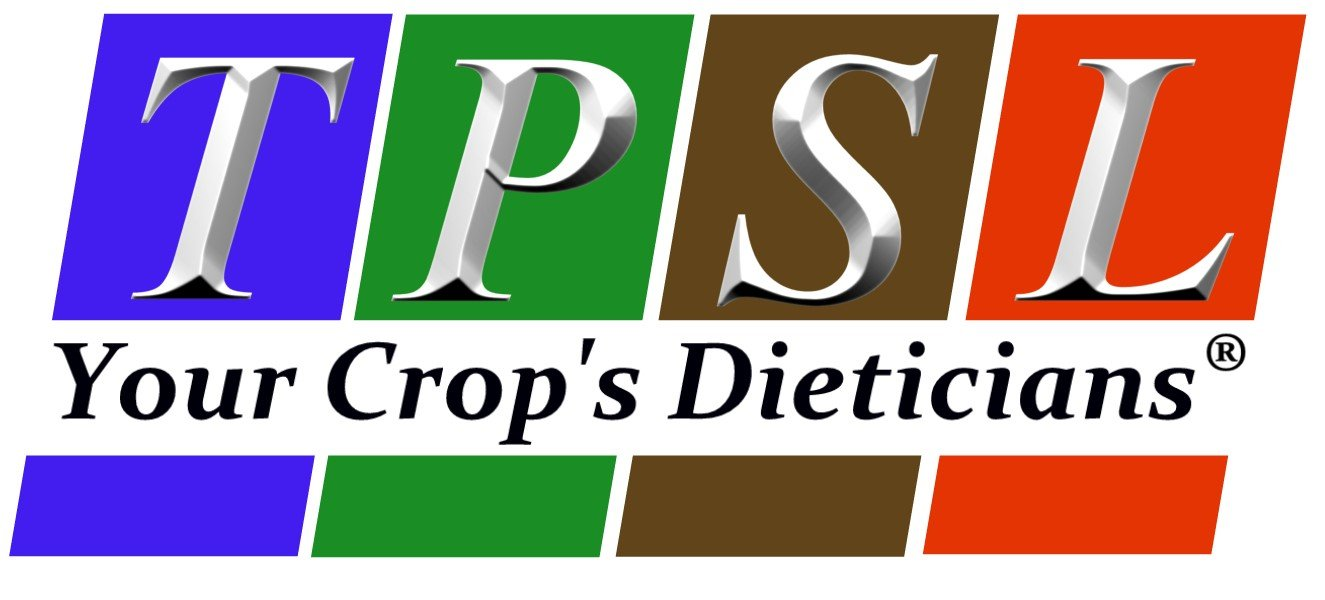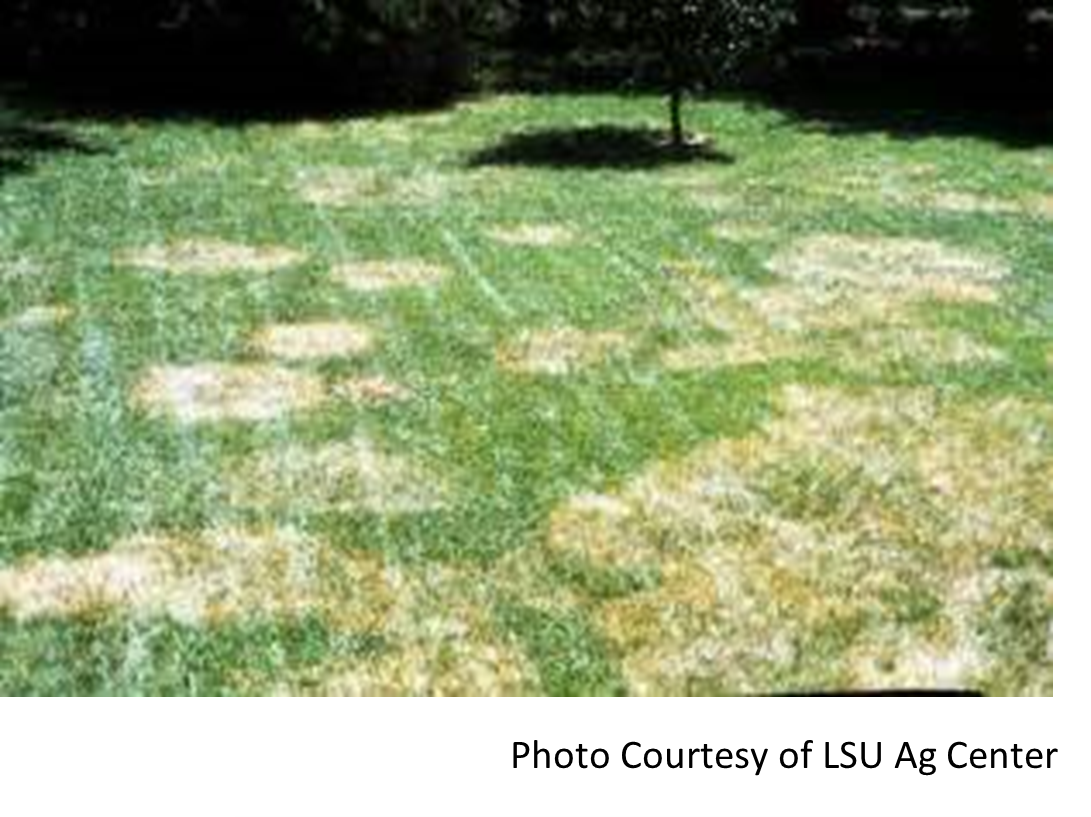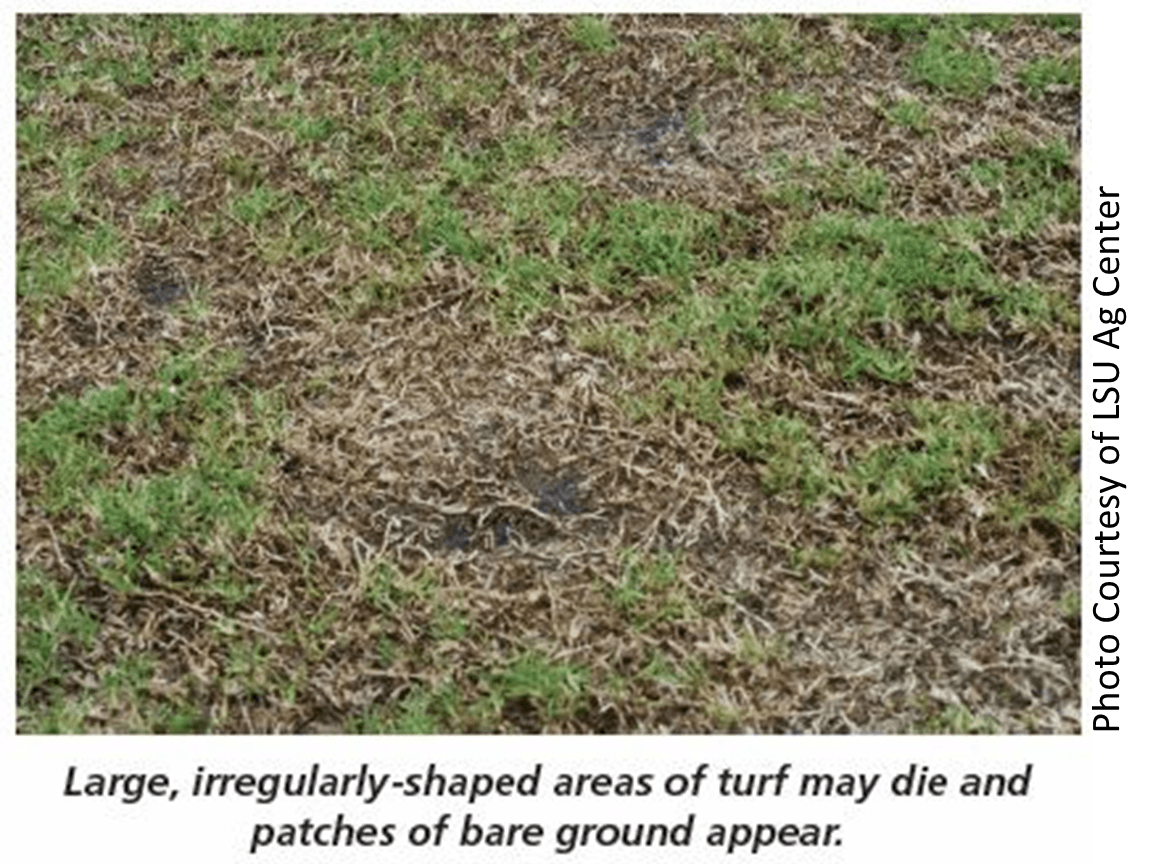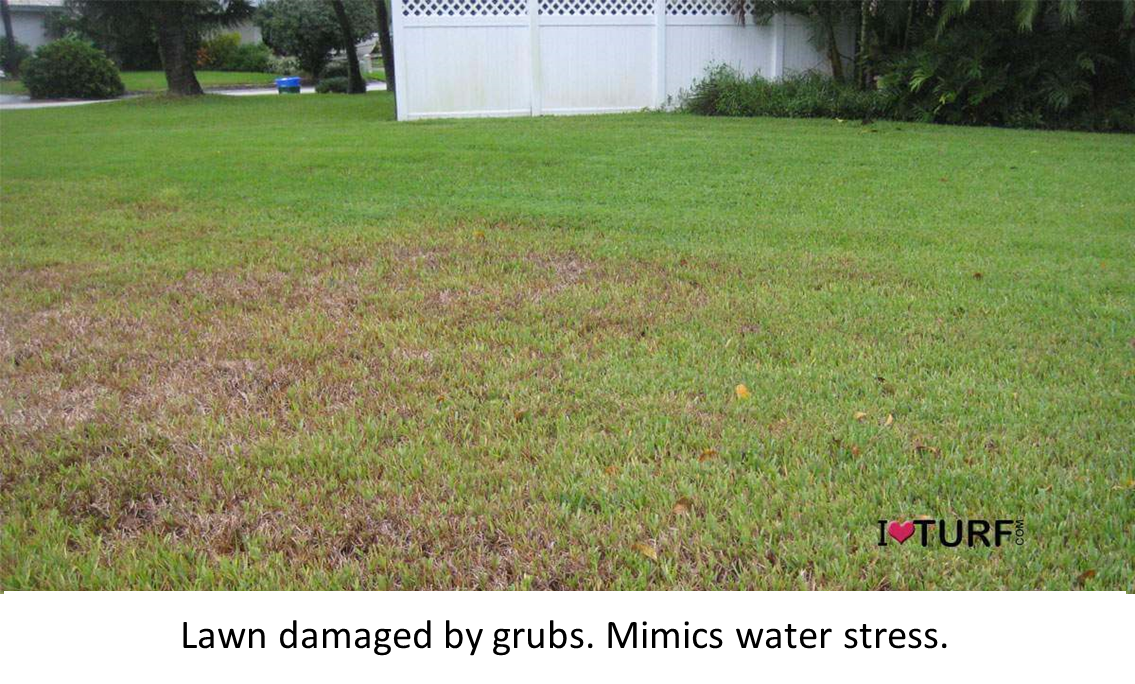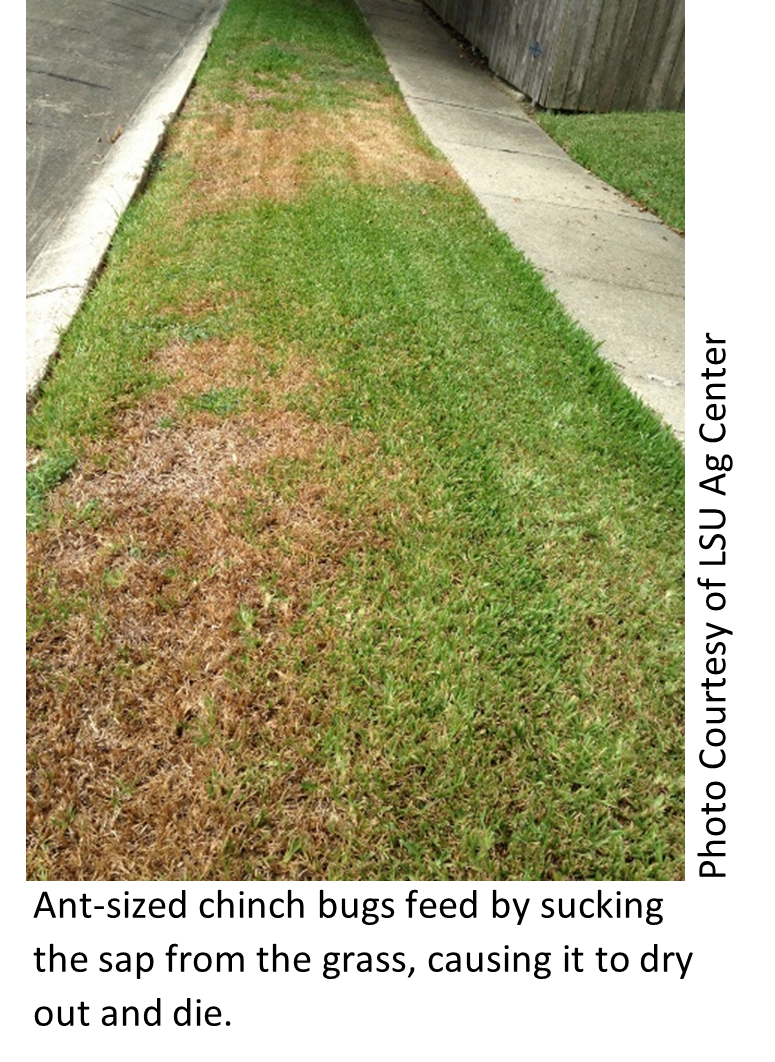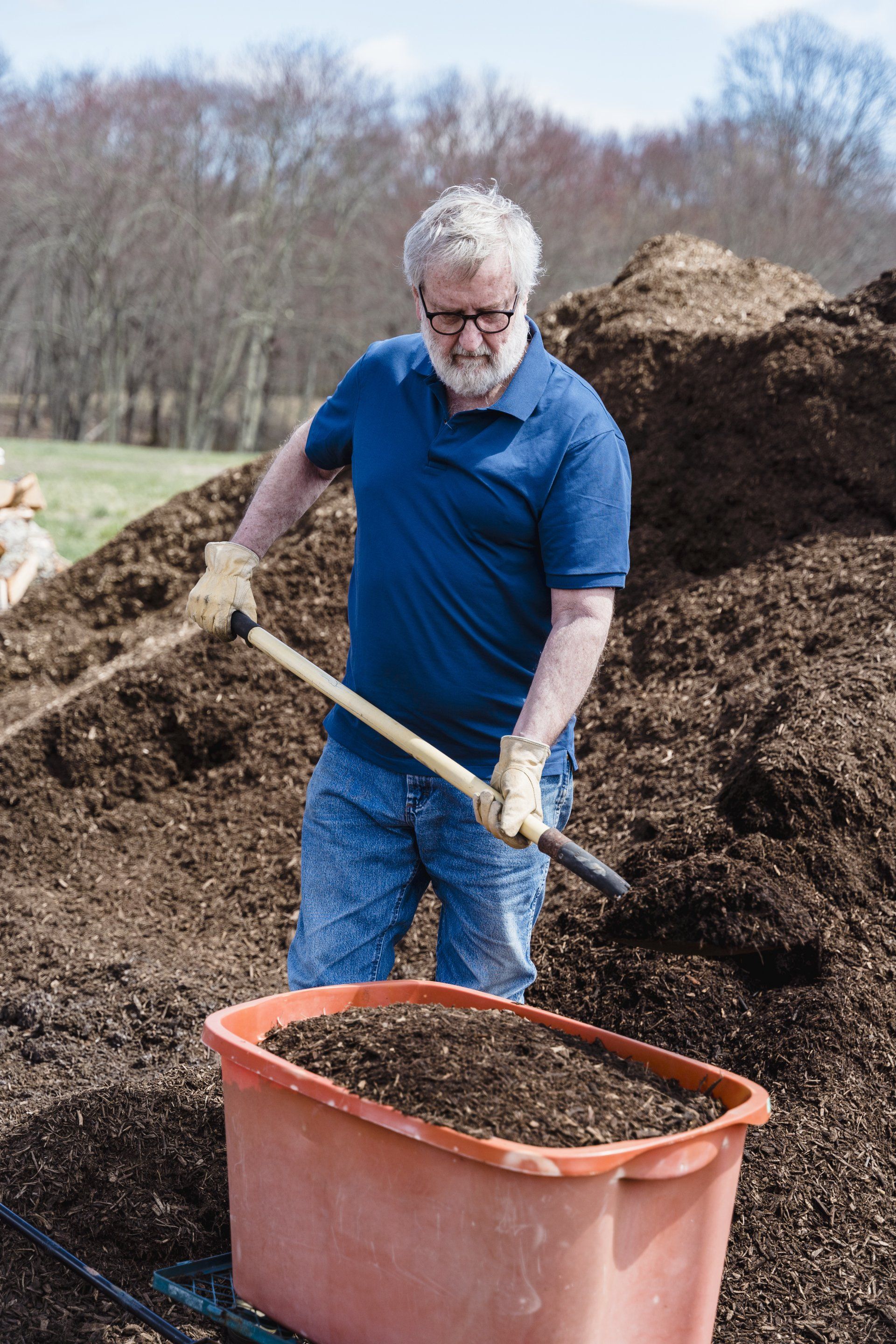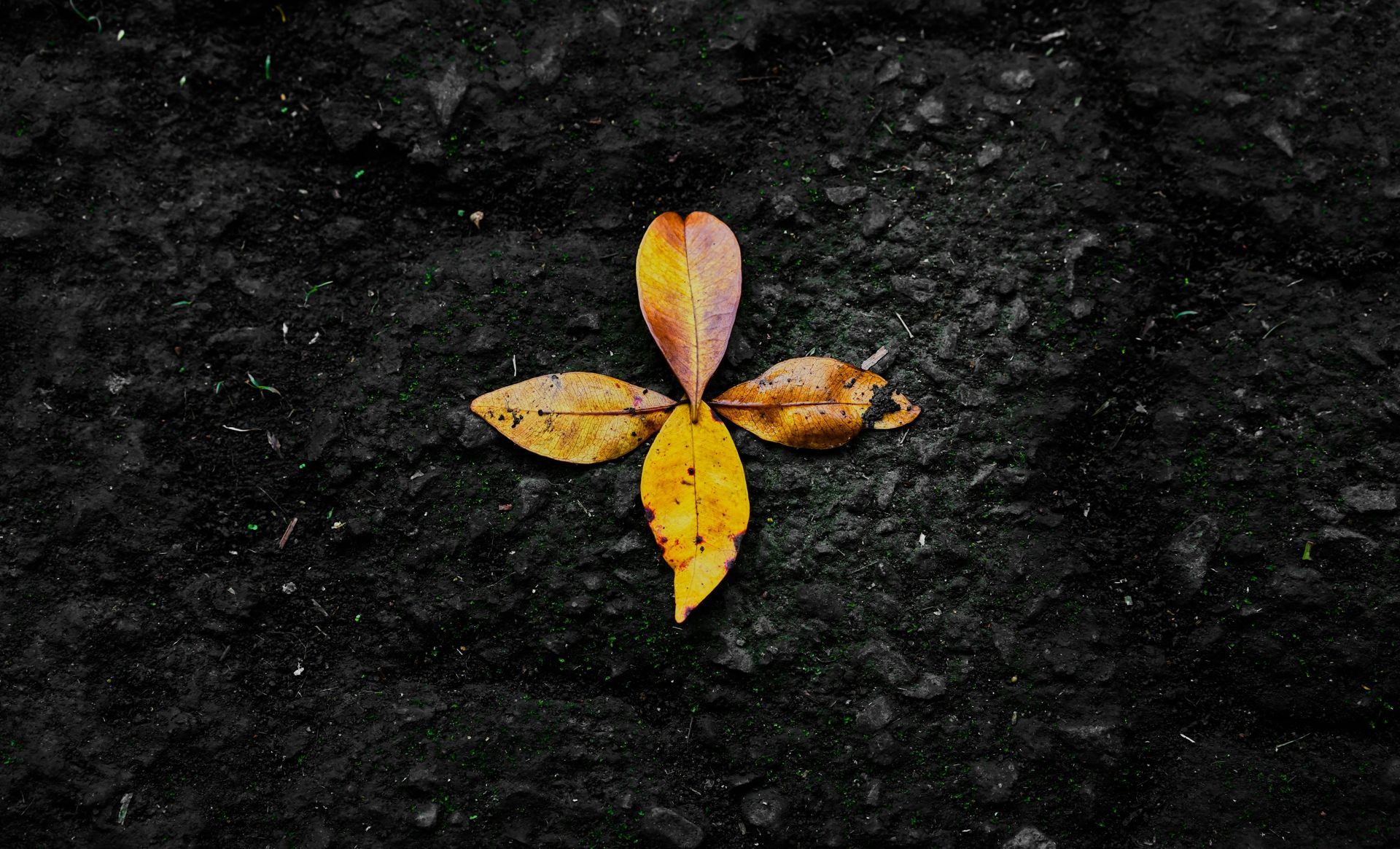Diagnosing Common Lawn Problems
Find out what's killing your lawn.
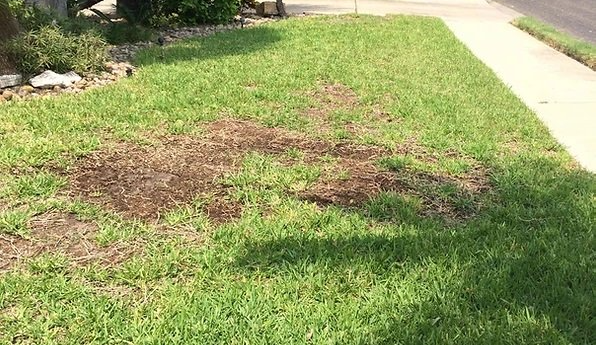
St. Augustine grass, known for its beautiful, lush green look, is one of the most prominent turfgrasses in the South. Unfortunately, it is susceptible to several common diseases and pests, making it a challenging turfgrass to manage.
Let's look at some of the pros and cons of St. Augustine grass:
Advantages:
- Moderate level of maintenance and mowing
- A carpet-like surface that competes well against weeds and other grasses
- Does well in full sun and shade
- Tolerates heat and humidity
- Well-suited for coastal areas due to tolerance of salty conditions
Disadvantages:
- Not as hardy to cold weather, so it's restricted to areas with mild winters
- Vulnerable to drought and requires supplemental irrigation
- Needs routine applications of fertilizer
- Does not handle high traffic as well as some other sod types
- High susceptibility to disease and pests
This article will take a closer look at St. Augustine's vulnerability to common diseases and pests and give some things to look for that can help you correctly identify some common problems.
Brown Patch (Rhizoctonia solani) - is a destructive fungus that affects all types of turfgrass. A summer disease, it is usually triggered by warm temperatures and high humidity. Circular patterns of dead grass blades, with new leaves sometimes emerging in the patch's center, giving it a donut-shaped appearance. Brown patch thrives in lawns with excessive thatch (healthy soils do not have thatch).
Some situations that make Brown Patch worse include: watering your lawn late in the day and over-fertilizing with high nitrogen fertilizers. When you irrigate, water early in the morning to allow enough time for your lawn to dry out during the day; avoid leaving your lawn wet overnight.
Take-All Patch (Gaeumannomyces graminis) - is a highly destructive fungus that causes root rot. While the fungus occurs naturally below ground, high rainfall and stressed turfgrass caused by poor lawn maintenance can trigger the disease. First, you will notice irregular yellow leaves or light-green patches followed by thinning and dying grass. Roots rot so much that grass can be easily pulled up. This disease is often misdiagnosed as iron deficiency or as chinch bug damage in the summer, and applying treatments for these problems can cause the disease to spread faster.
Take-All Patch most commonly affects lawns during the fall and through spring due to abundant moisture and cooler temperatures, but dieback symptoms most often appear in the hot days of summer.
Unfortunately, there is no effective fungicide for Take-All Patch available to homeowners. The best option is to improve soil health and to avoid stressing your lawn. Good turf management includes maintaining adequate soil drainage, avoiding over-fertilization, raising the mowing height on your mower, and avoiding the use of broadleaf herbicides during the summer months as they may weaken turfgrasses. Some folks have had success combating this disease by using beneficial soil bacteria. Bacterial soil inoculants that contain Bacillus subtilis and Streptomyces griseus are most effective.
Differences between Take-All Patch and Brown Patch.
| Take-All Patch | Brown Patch |
|---|---|
| Dead runners and roots | Dead leaves |
| Irregularly shaped areas of dead grass | Circular patches of dead grass |
| Appears during cooler/wetter months | Appears in the hotter months |
| Can not be treated with common fungicides | Can be treated with propiconazole |
Both Brown Patch and Take-All Patch are spread by infected equipment. Taking precautions to clean and sanitize your equipment is recommended.
White grub - damage appears in the spring. Grass typically pulls loose easily from the soil because roots have been eaten by the white grubs (larvae of June beetles). If you dig several square-foot patches in the afflicted areas and find more than five grubs, treatment is essential. If you encounter less than two grubs, grubs are not the cause of the dead grass. Several insecticides are available to the homeowner for controlling white grubs. Healthy lawns can outgrow smaller populations. A healthy and well-balanced fertilization program is the best tool to prevent grub infestations.
Chinch bugs - are small black insects with white, diamond-shaped patches on their wings. You will most often find them in the hottest and sunniest parts of the lawn. The grass will appear dry, but watering won't perk it back up. Grass blades fold and turn a glossy olive-gray. Apply a labeled insecticide quickly, or the grass will be killed in the infected areas. The use of insecticidal soap or other least toxic treatments is also advisable.
Finally, maintaining a healthy lawn is the best way to avoid any of these problems. Creating healthy soil to a depth of at least 6 inches can be done at planting by incorporating several inches of quality compost and annual maintenance.
Applications of beneficial soil inoculants can also achieve good results. Aerate your lawn once a year if compaction issues are still a problem. Applying soil inoculants periodically thru out the year will also help reduce compaction issues. It is highly recommended that you feed the beneficial bacteria in your soil by adding carbon sources such as humic/fulvic acids, molasses, and amino acids. Irrigating efficiently (water in the morning, wet soil to a depth of 4-6 inches, and allow the soil to dry out between irrigations) will promote better aerobic conditions.
Mow properly, taking no more than 1/3 of the leaf blade off with each mowing. And finally, test your soil yearly to determine which nutrients are lacking before deciding how much to fertilize.
Testing also helps you choose the appropriate fertilizer so you don't over-apply unnecessary nutrients. One last tip is to spoon-feed your lawn. To get the most benefit for your fertilizer, opt for organic fertilizers that naturally release more slowly. Doing so will result in less water use, less mowing, fewer weeds and disease, and reduced insect pressure.
